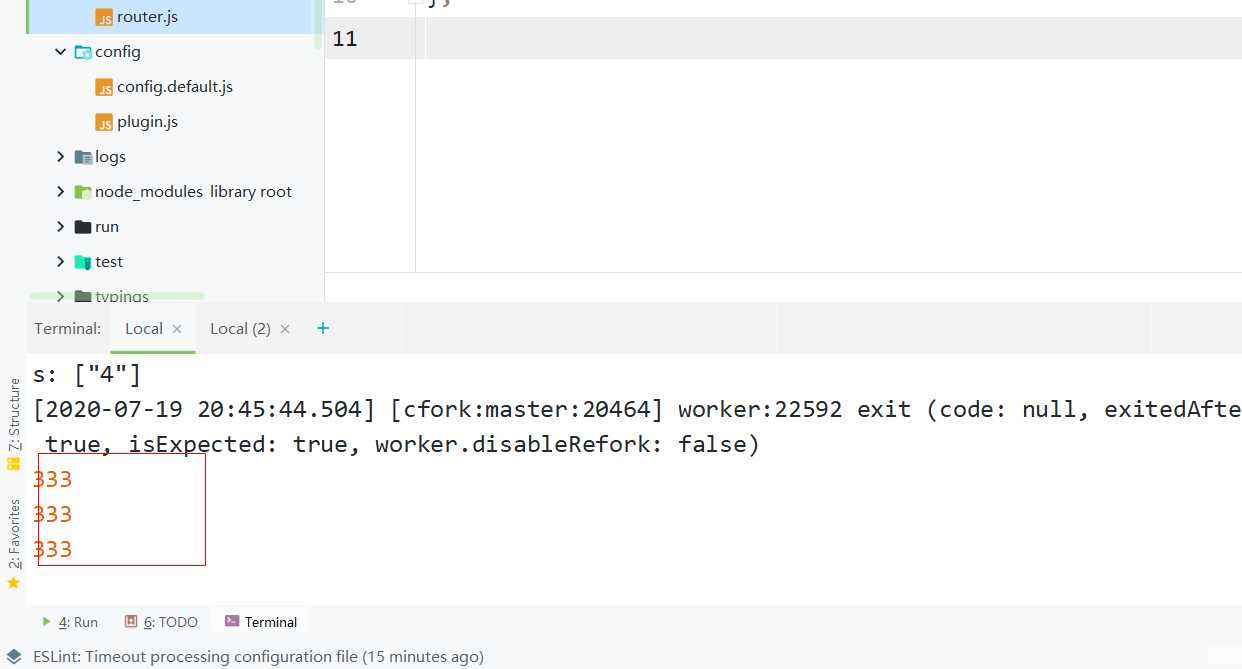小小又开始学习了,这次学习的是中间件和插件。
这次将会对这两个点,进行学习。
中间件
对于egg.js 来说,中间件和express的中间件性质相似,和洋葱模型类似。
这里首先讲解的是egg.js的中间件
关于洋葱模型
首先来两张图来展示洋葱模型。
再来一个简单的demo
const Koa = require('koa');
const app = new Koa();
const PORT = 3000;
// #1
app.use(async (ctx, next)=>{
console.log(1)
await next();
console.log(1)
});
// #2
app.use(async (ctx, next) => {
console.log(2)
await next();
console.log(2)
})
app.use(async (ctx, next) => {
console.log(3)
})
app.listen(PORT);
console.log(`http://localhost:${PORT}`);
执行该koa的中间件,输出的内容如下
1
2
3
2
1
执行的总体顺序为执行第五行的内容,
console.log(1)
这是第五行的内容,输出1
遇到next,输出接着执行第二个中间件,输出内容为2.
继续遇到next,进入第三个中间件,输出内容为3.
此时没有next了,接着返回。
输出第二个中间件的内容,为2.
接着最后输出第一个中间件,中间件内容为1.
所以,执行结果为
12321
编写中间件
在目录中新建文件
app/middleware/gzip.js
在该目录下新建相关的中间件
// 引入相关的包
const isJSON = require('koa-is-json');
const zlib = require('zlib');
async function gzip(ctx, next) {
await next();
// 后续中间件执行完成后将响应体转换成 gzip
let body = ctx.body;
if (!body) return;
if (isJSON(body)) body = JSON.stringify(body);
// 设置 gzip body,修正响应头
const stream = zlib.createGzip();
stream.end(body);
ctx.body = stream;
ctx.set('Content-Encoding', 'gzip');
}
手动挂载中间件
中间件编写完成以后,这里进行手动的挂载中间件。
在config.default.js目录中,配置相关的中间件。
/* eslint valid-jsdoc: "off" */
'use strict';
/**
* @param {Egg.EggAppInfo} appInfo app info
*/
module.exports = appInfo => {
/**
* built-in config
* @type {Egg.EggAppConfig}
**/
const config = exports = {};
// use for cookie sign key, should change to your own and keep security
config.keys = appInfo.name + '_1595046215730_9281';
// add your middleware config here
// 添加中间件
config.middleware = [];
// add your user config here
const userConfig = {
// myAppName: 'egg',
};
return {
...config,
...userConfig,
};
};
编写配置相关的中间件。
配置完成以后文件如下
/* eslint valid-jsdoc: "off" */
'use strict';
/**
* @param {Egg.EggAppInfo} appInfo app info
*/
module.exports = appInfo => {
/**
* built-in config
* @type {Egg.EggAppConfig}
**/
const config = exports = {};
// use for cookie sign key, should change to your own and keep security
config.keys = appInfo.name + '_1595046215730_9281';
// add your middleware config here
// 添加中间件
config.middleware = ['gzip'];
// add your user config here
const userConfig = {
// myAppName: 'egg',
};
return {
...config,
...userConfig,
};
};
这就完成了中间件的配置。
这样就完成了全局中间件的配置。
单个路由使用中间件
之前使用的是全局的中间件,这里使用单个路由的中间件。
编写app/router.js 配置文件
'use strict';
/**
* @param {Egg.Application} app - egg application
*/
module.exports = app => {
const { router, controller } = app;
router.get('/', controller.home.index);
};
这里为了更加方便的展示,对中间件函数进行了修改
const isJSON = require('koa-is-json');
const zlib = require('zlib');
module.exports = options => {
return async function gzip(ctx, next) {
console.log(333);
await next();
// 后续中间件执行完成后将响应体转换成 gzip
let body = ctx.body;
if (!body) return;
// 支持 options.threshold
if (options.threshold && ctx.length < options.threshold) return;
if (isJSON(body)) body = JSON.stringify(body);
// 设置 gzip body,修正响应头
const stream = zlib.createGzip();
stream.end(body);
ctx.body = stream;
ctx.set('Content-Encoding', 'gzip');
};
};
再次修改router.js 配置文件
'use strict';
/**
* @param {Egg.Application} app - egg application
*/
module.exports = app => {
const { router, controller } = app;
const gzip = app.middleware.gzip({ threshold: 1024 });
router.get('/', gzip ,controller.home.index);
};
这样就完成了对中间件的使用
插件
这里进行学习的是插件相关的内容。
什么是插件
插件是一个迷你的应用,包含了 Service、中间件、配置、框架扩展等等
没有独立的Router 和 Controller
没有 plugin.js,只能声明依赖,不能决定是否开启。
使用插件
安装egg-mysql 依赖
npm i egg-mysql --save
再 config/plugin.js 中,声明插件。
exports.mysql = {
enable: true,
package: 'egg-mysql',
};
这样就完成了对插件的使用
本章学习结束。
点击查看更多内容
为 TA 点赞
评论
共同学习,写下你的评论
评论加载中...
作者其他优质文章
正在加载中
感谢您的支持,我会继续努力的~
扫码打赏,你说多少就多少
赞赏金额会直接到老师账户
支付方式
打开微信扫一扫,即可进行扫码打赏哦









